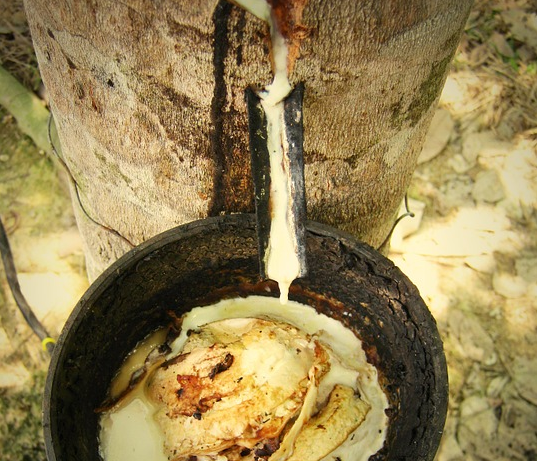A variety of rubber agroforestry systems have been developed and are considered a sustainable practice to reduce competition for land and diversify farmers' income at the same time. However, the productivity of agroforestry systems is often controlled by soil phosphorus (P) nutrient, and little information is available on P fractions dynamics in such system.
Researchers from Xishuangbanna Tropical Botanical Garden (XTBG) conducted a study aiming to discern how the dynamics of soil P fractions are affected by two different stand ages (10- and 22-year-old, young and mature) and two management practices (mono- and intercropping) in rubber plantation systems.
The researchers examined the seasonal, management and stand age effects on P fractions, acid phosphatase activity, microbial biomass P, other physical-chemical properties and litter and roots in four systems: 10-year-old rubber mono- (YM) and intercropping (YI) with N-fixing species (NFS), 22-year-old mono- (MM) and intercropping (MI) in Xishuangbanna, Southwestern China.
They found that dynamics of P fractions and bioavailability differ with management and stand age. Most P fractions varied seasonally at different soil depths, with highest values in the fog-cool season (i.e. labile P at 5–60 cm, non-labile P, total inorganic P and organic P at 30–60 cm), while moderately labile P varied little over time.
They further found that residual organic P acted as a buffering pool for labile P in highly weathered soil. Total P stock, to a certain extent, was reduced in YI, but increased in MI. In the long run, P pools cannot be compensated for traditional application of fertilizers, and thus litter conservation should be strengthened.
The researchers thus concluded that mature rubber plantation intercropping with N-fixing species appears to be more effective than young stand for P pool sustainability and high system productivity.
The study entitled “Phosphorous fractions in soils of rubber-based agroforestry systems: Influence of season, management and stand age” has been published online in Science of The Total Environment.
Contact
LIU Chenggang Ph.D
Key Laboratory of Tropical Plant Resources and Sustainable Use, Xishuangbanna Tropical Botanical Garden, Chinese Academy of Sciences, Menglun, 666303, China
E-Mail: liuchenggang@xtbg.ac.cn


